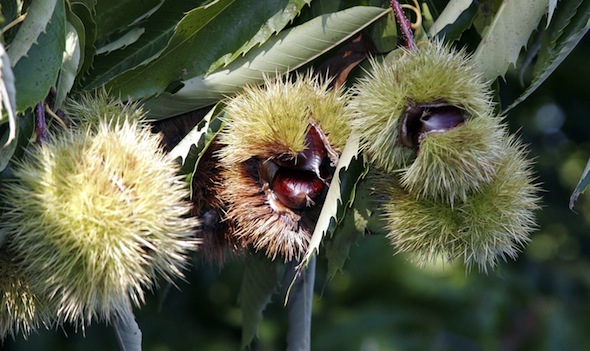
During antiquity, the chestnut tree was regarded in Greece as the tree of Zeus. Mount Olympus; home of the gods of the ancient Greeks, was said to have had an abundance of chestnut trees producing this sweet edible nut.
Once peeled of their hard, dark brown outer shells and bitter inner skin, chestnuts can be enjoyed in a variety of ways as roasted, boiled, mashed, preserved or candied. A special type of coffee with calming effects is produced from dried chestnuts, while the chestnut tree leaves are used for their therapeutic properties in lung diseases and rheumatism.
The annual “Chestnut Festival” took place during the weekend of October 30th-31st in the mountainous village of Kastanitsa, Arcadia prefecture.
The 27th annual festival is one of the most important agricultural and cultural events of the region.
Similar celebrations are also held in Paleochori in Kavala prefecture, Damaskinia in the prefecture of Kozani, Agiasos on the island of Lesvos, Karitsa in the prefecture of Larissa and in Arna in the prefecture of Laconia.
The sweet chestnut (Castanea sativa) was originally a native to Asia Minor and was introduced into Europe from Sardis in Asia Minor. The nut was then called the ‘Sardian Nut’. It has been a staple food in Southern Europe, Turkey and southwestern and eastern Asia for millennia. It largely replaced cereals where these would not grow well if at all, in mountainous Mediterranean areas.
Alexander the Great and the Romans planted chestnut trees across Europe while on their various campaigns. The Greek army is said to have survived their retreat from Asia Minor in 401-399 B.C. thanks to their stores of chestnuts. Ancient Greeks like the physician, pharmacologist and botanist Dioscorides and Romans such as Galen, the prominent physician and philosopher of Greek origin, wrote of chestnuts to comment on their medicinal properties. To the early Christians chestnuts symbolized chastit. Until the introduction of the potato, whole forest-dwelling communities which had scarce access to wheat flour relied on chestnuts as their main source of carbohydrates. In some parts of Italy a cake made of chestnuts is used as a substitute for potatoes.
(source: ana-mpa)
See all the latest news from Greece and the world at Greekreporter.com. Contact our newsroom to report an update or send your story, photos and videos. Follow GR on Google News and subscribe here to our daily email!



